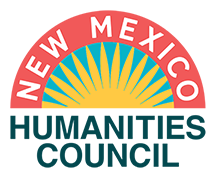CALL TO ACTION FROM THE NATIONAL ENDOWMENT FOR THE HUMANITIES
In October 2022 the Office of Management and Budget initiated a course on the Uniform Guidance for all Humanities Councils. The course was funded and sponsored by the National Endowment for the Humanities (NEH). As part of this course, NEH made a direct call to action for all Humanities Councils to develop an implement a risk assessment system and a strategic grant management plan.
This is one of the primary reasons, NMHC staff is hosting debriefing educational sessions with members of the Grant Committee. The following bullet points are summaries talking points that NMHC staff will verbally go over with you.
- STRATEGIC PLAN DEVELOPMENT: An A through Z process analysis has modified steps that take place prior to the application process; during the lifecycle of a grant; and during the closing process of a grant.
- RISK MITIGATION: Additional one-on-one educational sessions are being hosted with applicants, subrecipients and NMHC Board members.
- RISK ASSESSMENT: Additional risk evaluation questions have been integrated into the general screening form and final application.
- RISK ASSESSMENT: The evaluation score cards provided to the Grant Committee have a direct relationship to grant guidelines and risk evaluations.
- RISK ASSESSMENT: Address the link between attendance and pre-event marketing, that is tangibly connected to the budget. Confirm if an applicant has a pro-active marketing plan or passive marketing plan.
- RISK ASSESSMENT: Evaluate an applicants understanding of caps in the budget form.
- RISK ASSESSMENT: Evaluate an applicants ability to create a budget that is clear for an auditor to review.
- RISK ASSESSMENT: Evaluate an applicants ability to refrain from unallowable activities.
- RISK ASSESSMENT: Evaluate an applicants compliance to refrain from calls to action, lobbying, or advocacy.
GOALS AND OBJECTIVES FOR NMHC'S GRANT PROGRAM

NMHC has reframed our grant making process. Previously, there were two major grant cycles a year. We now have one major grant cycle a year and also offer quick grants each month. The goal is to better address community needs year round in a way that is also manageable from a human resources perspective.
Organizations may receive up to four quick grants a year. The quick grant line will not only make funding accessible year-round it will also provide a means for new applicants to become familiar with the federal grant management process in a way that is less intimidating and therefore create a pathway to encourage more organization’s to also apply through the major grant line.
- The quick grant’s smaller awards makes it easier for new organizations to become comfortable with identifying ways to provide cost-share and in-kind to meet the one-to-one matching requirement.
- By accepting quick grant applications each month, organizations gain the ability to make corrections or adjustment’s to their project proposals and resubmit the following month. The goal is to improve awareness of federal guidelines, reduce risk and also ensure funding remains accessible.
- Alternatively, quick grants provides an alternative funding option for applicants not selected in the more competitive major grant process.
IMPORTANT: Applications submitted through the major grant process that show signs of risk or non-compliance should be declined and referred to the quick grant line for further refinement.
It is also important to note, since major grant applications are now only accepted in October, some major grant projects proposals may have less scholars or other educational presenters marked as “confirmed” in the application. However, it has been noted that NMHC needs to reevaluate and reconsider how much weight is placed on commitments from scholars and other educational presenters. This re-evaluation is not only in response to having one grant cycle a year, it is also a to acknowledge how projects are developed and executed in a real world scenarios.
NMHC’s Director of Grants will provide some examples as part of her talking points within the Grant Committee’s orientation. Reflections will be shared on making evaluations more relevant to real world project planning. Examples will include film festivals, juried and curated exhibitions and other programming that incorporates open calls for other content. Within the application you will notice NMHC staff notes reflecting on this specific topic.
- GOAL: Use the risk assessment and grant guideline scoring system as a guide to select projects. This includes factoring in staff comments on an applicants previous performance.
- OBJECTIVE: Demonstrate to NEH that NMHC takes liability and grant guidelines seriously. Reward both returning and new applicants who have put in the extra effort to be compliant with federal regulations and grant guidelines.
- GOAL: Provide full funding support to selected projects (minus any identified unallowable costs). NOTE: This is not required but is strongly encouraged.
- OBJECTIVE: Ensure projects are able to be more successful and therefore make a greater community impact. Reduce the amount of other funding sources an organization needs to pursue just to sustainably execute a project.
- GOAL: Reduce the administrative burden linked to filling out the application. NOTE: For this reason, NMHC has incorporated more check boxes, and areas for applicants to respond with bullet points to reduce the number of essays within the application.
- OBJECTIVE: Make the grant application process more accessible.
- GOAL: Intentionally pursue ways to make grant funding more accessible and also better represent underserved communities. NOTE: Please click the link in the button below to review NMHC's initiative to reframe "scholars" to include a range of educational presenters.
- OBJECTIVE: Make the grant application process more accessible in a way that seeks to ensure historically marginalized voices are part of shaping the narrative.
